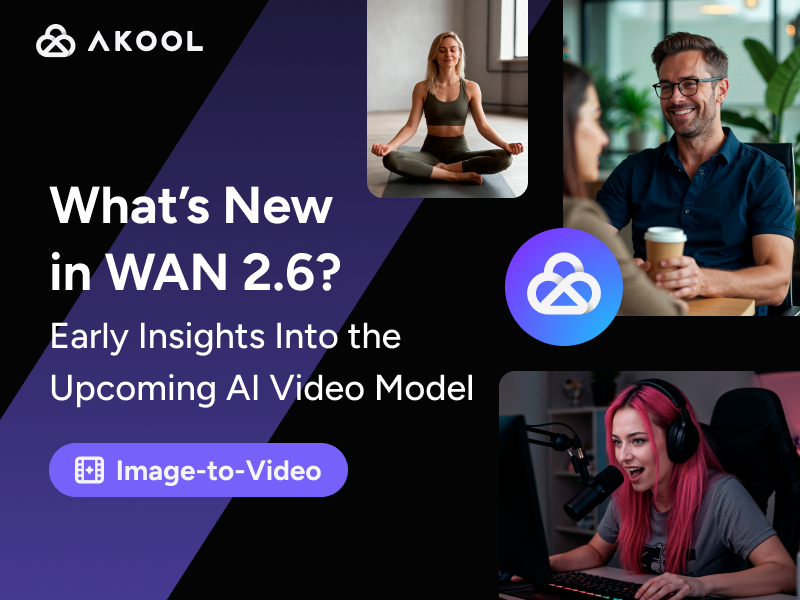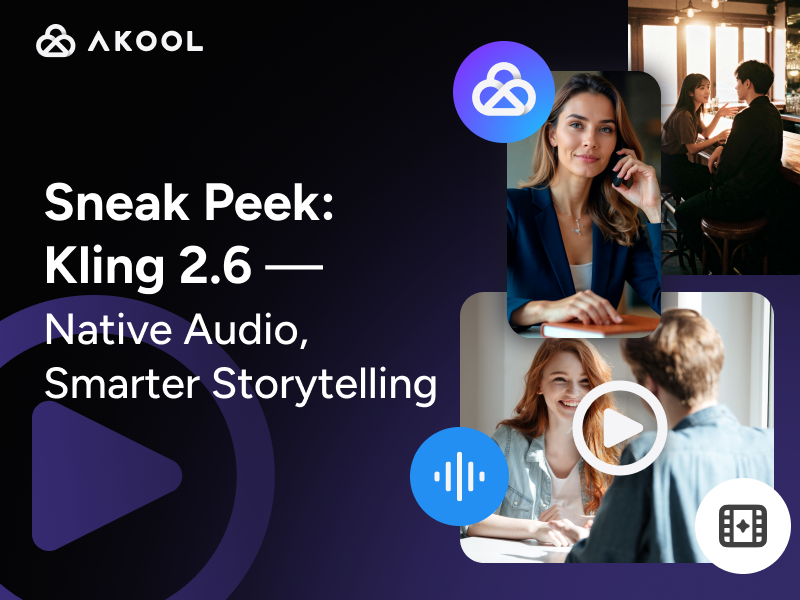Introduction to AI for Talent Analytics
AI for talent analytics leverages artificial intelligence to analyze workforce data, identifying patterns and predicting trends. It helps creative agencies make data-driven decisions about hiring, talent management, and team optimization. Key capabilities include predictive modeling, sentiment analysis, and skill gap identification. By automating data analysis, AI reduces bias and enhances decision accuracy, enabling creators to focus more on innovative work.
How to Use AI for Talent Analytics
Implementing AI for talent analytics can revolutionize the way creative agencies and creators manage their workforce. Here's a step-by-step guide to effectively utilizing AI in this domain:
1. Define Your Objectives
- Identify Goals: Determine what you want to achieve with AI—be it improving hiring practices, enhancing team performance, or predicting future talent needs.
- Select Key Metrics: Establish the metrics you will use to measure success, such as engagement rates, project outcomes, or diversity indices.
2. Data Collection and Preparation
- Aggregate Data: Gather data from diverse sources like HR databases, social media profiles, and client feedback.
- Data Cleaning: Ensure the data is accurate and free of errors. This step is crucial for reliable AI predictions.
3. Choose the Right AI Tools
- Talent Identification Tools: Use AI in Talent Acquisition platforms that specialize in analyzing creative portfolios and social media presence.
- Performance and Skill Analysis: Select tools capable of evaluating past performance and identifying skill gaps using algorithms like clustering and regression.
4. Implement AI Models
- Predictive Analytics: Deploy Predictive HR Analytics models to forecast future talent needs and market trends.
- Sentiment Analysis: Use NLP to assess employee morale and satisfaction from textual data.
5. Analyze Results and Iterate
- Evaluate Outcomes: Compare the AI-generated insights with your initial objectives.
- Adjust Strategies: Refine your approach based on AI feedback to better align with your goals.
6. Foster a Culture of Continuous Improvement
- Training and Development: Use insights to address skill gaps through targeted programs and AI Corporate Training Videos.
- Bias Mitigation: Regularly update AI models to minimize biases and ensure fair talent evaluation.
By following these steps, creative agencies and creators can harness the full potential of AI for talent analytics, leading to more informed and strategic decisions in talent management.
Applications of AI for Talent Analytics
AI for talent analytics is transforming how creative agencies and creators manage talent and optimize their teams. Here are some popular applications:
Talent Identification: AI tools analyze portfolios and social media to identify emerging talent by assessing engagement metrics and creativity levels.
Performance Evaluation: Algorithms assess past projects and client feedback to provide objective performance evaluations, helping agencies make informed decisions.
Skill Gap Analysis: AI identifies skill gaps within teams, suggesting targeted training or new hires to enhance team capabilities.
Predictive Analytics: Forecasting tools predict future talent needs based on market trends and project pipelines, aiding in strategic planning.
Diversity and Inclusion: AI analyzes demographic data to ensure diverse and inclusive hiring practices, fostering a more innovative workplace.
| Applications | Description |
|---|---|
| Talent Identification | Analyzing portfolios and social media for emerging talent |
| Performance Evaluation | Objective evaluations through past projects and feedback |
| Skill Gap Analysis | Identifying team skill gaps for targeted training |
| Predictive Analytics | Forecasting future talent needs based on trends |
| Diversity and Inclusion | Analyzing demographics for inclusive hiring practices |
Technical Insights into AI for Talent Analytics
AI for talent analytics utilizes machine learning algorithms to process extensive workforce data. Key technical aspects include:
Data Acquisition: Sources include HR databases, social media, and employee feedback. AI tools aggregate and clean this data for analysis.
Predictive Modeling: Using statistical techniques, AI builds models to forecast talent needs and identify potential performance trends. Techniques like regression analysis and decision trees are often employed.
Sentiment Analysis: Natural Language Processing (NLP) algorithms analyze textual data from employee reviews and communications to gauge morale and satisfaction.
Skill Gap Identification: By comparing current employee skills against industry benchmarks, AI pinpoints areas needing development. Clustering algorithms can group similar skill sets for targeted analysis.
Bias Reduction: AI systems are programmed to identify and mitigate biases in data, providing more objective insights into recruitment and talent management processes.
| Technical Aspects | Functions |
|---|---|
| Data Acquisition | Aggregating data from HR databases and social media |
| Predictive Modeling | Forecasting talent needs using regression and decision trees |
| Sentiment Analysis | Gauging employee morale through NLP |
| Skill Gap Identification | Pinpointing development areas by comparing skills |
| Bias Reduction | Mitigating biases in recruitment and management processes |
By integrating these technical elements, AI for talent analytics offers a robust framework for understanding and optimizing workforce dynamics. This approach allows creative agencies to align their talent strategies with business goals effectively.
Statistics on AI for Talent Analytics
The integration of AI into talent analytics is revolutionizing how organizations manage and optimize their workforce. Here are some key statistics that highlight the impact and potential of AI in this field:
Adoption Rate: As of 2023, approximately 60% of large enterprises have integrated AI-driven AI in Human Resources into their processes, underscoring the growing reliance on AI to enhance decision-making and streamline HR operations.
Efficiency Improvement: Organizations using AI for talent analytics report a 30% increase in recruitment efficiency, thanks to tools like AI Resume Screening.
Predictive Accuracy: AI models can predict employee turnover with up to 95% accuracy, aiding in retention strategies.
Cost Reduction: Implementing AI in talent analytics can lead to a 20% reduction in HR operational costs.
Employee Engagement: Companies using AI in talent analytics have seen a 15% increase in employee engagement scores.
These statistics illustrate the transformative role AI plays in talent analytics, equipping creative agencies, developers, and creators with powerful tools to refine their human resource strategies and drive organizational success.
FAQ Section: Unlocking the Power of AI for Talent Analytics
What is AI for Talent Analytics and how does it benefit my organization?
AI for Talent Analytics leverages artificial intelligence to analyze workforce data, providing insights into employee performance, engagement, and retention. This helps organizations make data-driven decisions to optimize talent management and improve overall productivity.
How can AI-driven talent analytics improve recruitment processes?
AI-driven talent analytics can streamline recruitment by identifying patterns in successful hires, predicting candidate success, and reducing bias. This results in more efficient hiring processes and better alignment between candidates and job roles.
What types of data does AI for talent analytics utilize?
AI for talent analytics typically uses data from various sources, including employee performance reviews, engagement surveys, HR systems, and social media profiles. This comprehensive data collection allows for a holistic view of workforce dynamics.
How does AI talent analytics enhance employee retention?
By analyzing patterns in employee behavior and engagement, AI talent analytics can identify at-risk employees and suggest interventions to enhance retention. This proactive approach helps maintain a stable and motivated workforce.
Can AI talent analytics support diversity and inclusion initiatives?
Yes, AI talent analytics can help identify diversity gaps and track the effectiveness of inclusion initiatives. By providing insights into recruitment, promotion, and retention patterns, organizations can create more equitable workplaces.
Is AI talent analytics secure and compliant with data privacy regulations?
AI talent analytics platforms prioritize data security and comply with regulations such as GDPR and CCPA. They implement robust encryption and access controls to ensure sensitive employee data is protected.
How does AI for talent analytics integrate with existing HR systems?
Most AI talent analytics solutions are designed to seamlessly integrate with existing HR systems, such as Applicant Tracking Systems (ATS) and Human Resource Information Systems (HRIS), allowing for a unified approach to talent management.
What are the key performance indicators (KPIs) tracked by AI talent analytics?
Common KPIs tracked by AI talent analytics include employee turnover rates, engagement scores, time-to-hire, and diversity ratios. These metrics provide valuable insights into workforce health and guide strategic HR decisions.




